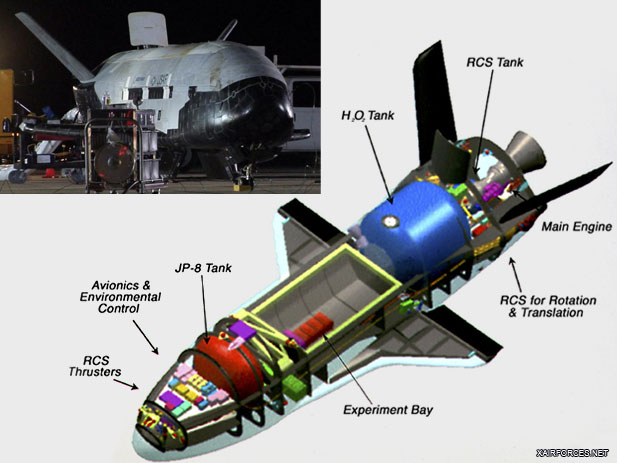
Is the Air Force's Secret Robot Space Plane Spying on China?

The U.S. Air Force’s top secret X-37B space plane may be spying on China, according to a report in Spaceflight magazine.
Top secret X-37B space plane may be spying on China
The unmanned craft was launched into Earth’s orbit 10 months ago, but the Air Force has kept quiet on its mystery mission, where it's been, and when it will return. Faithful onlookers now believe the space plane might be snooping on China’s new space station, Tiangong-1 -- after discovering how closely their orbits matched.
"Space-to-space surveillance is a whole new ball game made possible by a finessed group of sensors and sensor suites, which we think the X-37B may be using to maintain a close watch on China's nascent space station," Spaceflight Editor Dr. David Baker told the BBC.
Built by Boeing's Phantom Works division, the 29-foot-long X-37B spacecraft was originally developed by NASA in 1999 before it was eventually taken over and classified by the Defense Advanced Research Projects Agency (DARPA).
The robot craft’s official purpose is to test new spaceflight technologies but there has been speculation about X-37B’s potential military capabilities with Iran’s PressTV calling the vehicle a “secret space warplane” -- an opinion partly echoed by Brian Weeden, a technical adviser to the Secure World Foundation and a former orbital analyst with the U.S. Air Force.
Weeden suspects that the X-37B may be testing out gear for the National Reconnaissance Office, the intelligence agency that builds and operates the U.S.'s spy satellites -- which would explain the secrecy.
"As we know through experience, everything and anything about them [the NRO] is classified," Weeden told Space.com early last year.
The space plane, also known as the Orbital Test Vehicle-2, was boosted into Earth orbit atop an Atlas 5 rocket from Cape Canaveral, Fla., on March 5, 2011, and amateur skywatchers have been keenly tracking it ever since.
"The parallels with X-37B [and Tiangong-1] are clear," Baker said in this month’s Spaceflight. "With a period differential of about 19 seconds, the two vehicles will migrate toward or against each other, converging or diverging, roughly every 170 orbits."
But Weeden and others believe the orbital similarities between the two could be a red herring.
"A typical spy satellite is in a polar orbit, which gives you access to the whole Earth,” Weeden told the BBC.
"The X-37B is in a much lower inclination which means it can only see a very narrow band of latitudes -- and the only thing that's of real interest in that band is the Middle East and Afghanistan.”
Source: 05 January 2012 - Military Tech - SCITECH News (www.foxnews.com)
Photo: The U.S. Air Force X-37B space plane (Photo by NASA)
Photo Story: Is the Air Force's Secret Robot Space Plane Spying on China?
Inside the Air Force's Secret Space Plane
The U.S. Air Force launched the robotic X-37B space plane in early 2010 on a space mission that remains a secret -- even after the craft touched ground 225 days later at Vandenberg Air Force Base. In early 2011, the ship took off again on its latest mission.
(5.01.2012)
|